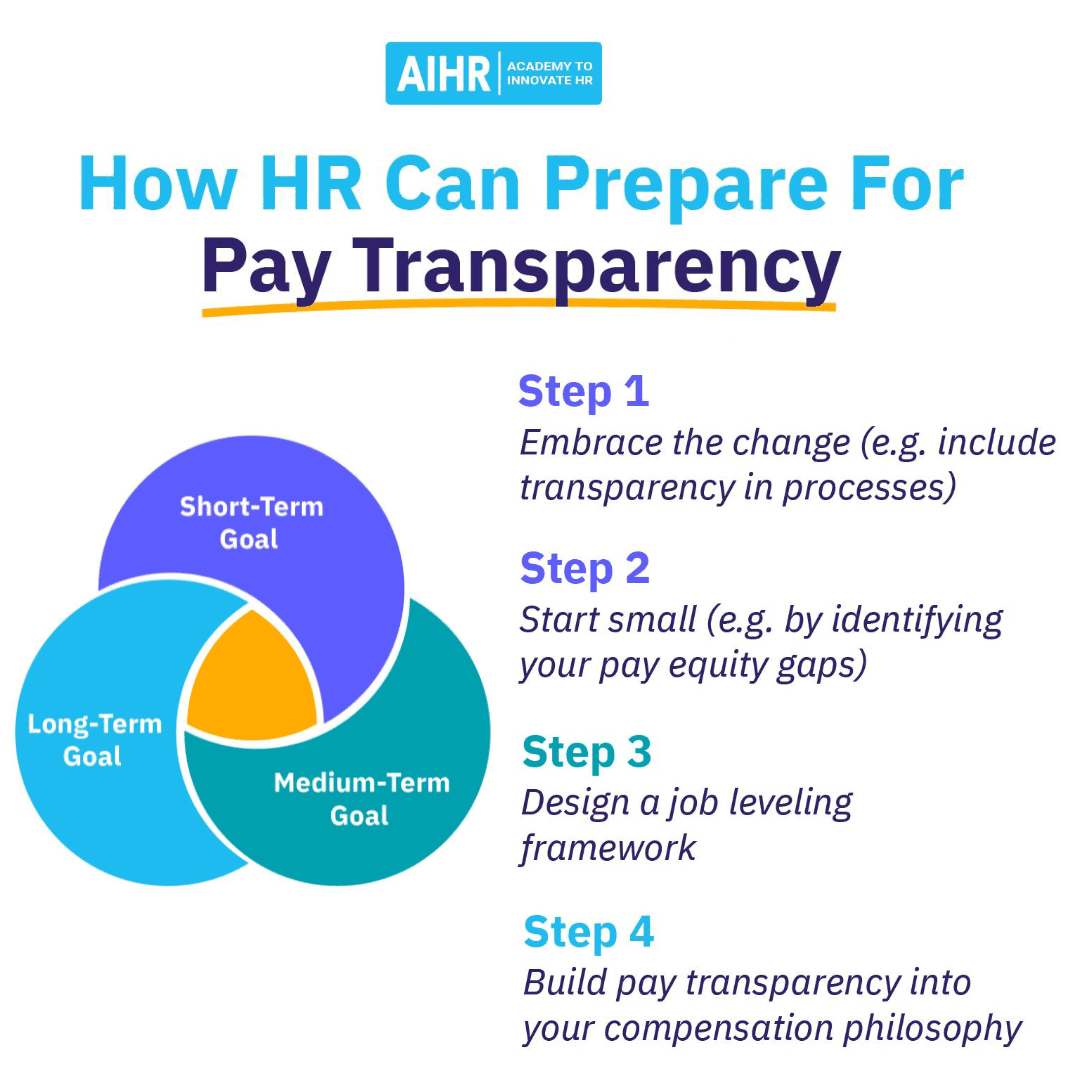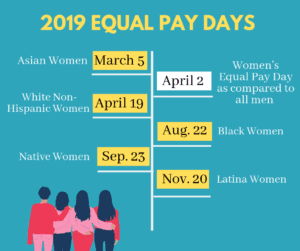








Pay Transparency
Pay transparency is the practice of openly and proactively sharing information on organizational compensation practices, including pay rates for specific positions, pay increases, bonuses or commission structures, benefits, retirement plans, or any other specifics about pay. Many applicants and employees assume that human resources (HR) are the driving force against pay transparency. Most times, that is not the case.
The Department of Labor wants you to know your rights in regard to pay transparency. Pay transparency was derived from the equal pay movement. The New York Times states that when pay transparency goes public, it is expected to help reduce wage gaps. As of 2022, the states that now require posting the salary range on job postings are:
- California
- Cincinnati, OH
- Toledo, OH
- Colorado
- Connecticut
- Maryland
- Nevada
- New York City
- Rhode Island
- Washington
I have noticed that job postings for companies that are not in any of the states listed above are following these states by posting their salary range as well. Some companies that hire in these states, as well as other states, have been very forthcoming with their updated pay transparency policies and guidelines. Click here to see the philosophy behind HubSpot’s pay transparency. To be even more forthcoming with this information, click here to see HubSpot’s blog about its pay transparency philosophy.
On CashApps job postings, it listed that Block (the owner of CashApp) takes a market-based approach to pay transparency. Below is the verbiage it posted on one of their most recent job postings for a Senior Human Resources Business Partner (HRBP) position:
Block takes a market-based approach to pay, and pay may vary depending on your location. U.S. locations are categorized into one of four zones based on a cost of labor index for that geographic area. The successful candidate’s starting pay will be determined based on job-related skills, experience, qualifications, work location, and market conditions. These ranges may be modified in the future.
Zone A: USD $167,300 – USD $204,500
Zone B: USD $155,600 – USD $190,200
Zone C: USD $147,200 – USD $180,000
Zone D: USD $138,900 – USD $169,700
To find a location’s zone designation, please refer to this resource. If a location of interest is not listed, please speak with a recruiter for additional information.
Benefits include the following:
- Healthcare coverage
- Retirement Plans including company match
- Employee Stock Purchase Program
- Wellness programs, including access to mental health, 1:1 financial planners, and a monthly wellness allowance
- Paid parental and caregiving leave
- Paid time off
- Learning and Development resources
- Paid Life insurance, AD&D. and disability benefits
- Perks such as WFH reimbursements and free access to caregiving, legal, and discounted resources
This role is also eligible to participate in Block’s equity plan subject to the terms of the applicable plans and policies and may be eligible for a sign-on bonus. Sales roles may be eligible to participate in a commission plan subject to the terms of the applicable plans and policies. Pay and benefits are subject to change at any time, consistent with the terms of any applicable compensation or benefit plans.
What is so great about pay transparency?
Pay transparency gives the power back to the job seeker and employee to choose a job where they not only fit the qualifications of this job but also verify that the pay is within their target pay goal prior to going through several interviews, getting their hopes up, and any other inconvenience.
It is known that males, and in particular white males, normally have a much higher salary than any other demographic who is performing the same job duties and/or holding the same job title. This is nothing new. Back in 2014, The Atlantic connected this back to the Confidence Gap.
In my opinion, the difficult part is really something that has lingered among minority females for an extremely long time. It is so much easier to progress financially with employment when you overcome imposter syndrome. Braintree blog wrote this blog back in 2015. Sadly enough, disparities in the pay gap, the confidence gap, and imposter syndrome existed long before 2014 and 2015.
What’s changed since pay transparency started?
Social media has really helped to bring the topic of pay transparency into the eyes of more people. Last year on October 22, 2022, SHRM brought to light one of the many times that someone has posted their pay online, on the world wide web, through platforms like Twitter.
Though SHRM highlighted a journalist in the writing industry, this is no different for an alarming amount of professionals in varying industries. The movement for pay transparency sparked energy during the same time as the #MeToo Movement, the Black Lives Matter (#BLM) Movement, and the COVID-19 pandemic.
What can happen when pay transparency is taken seriously?
I have really admired CultureAmp for quite some time. While using it in my full-time Human Resources (HR) profession, I realized that it was such a powerhouse of customizing data to get great feedback but also to give employees a voice. Surveys can be tailored to new hires, those who are resigning and so much more. When I saw CultureAmp’s blog on the “Pros and Cons of Pay Transparency”, it definitely caught my attention.
This blog, explains how the CEO of Buffer (owner of CultureAmp) wanted to take pay transparency to another level. Since being more transparent about the salaries of its employees, they have noticed that Buffer has been far more productive. It continued that pay transparency nearly requires you to have a clear salary policy. This will allow salaries to be evenly distributed, which makes employees feel even more inclusive.
I became even more intrigued by a Forbes blog entitled “What’s So Great About Pay Transparency”. This blog continued that implementing salary transparency in organizations should be the final step in company compensation philosophies and salary benchmarking. Benchmarking shows that the company didn’t pull these numbers out of their @#$! It shows that it researched that they were not only paying competitively but that they have verified that the company has equated the pay to the amount of work necessary to complete the duties of the job, that the qualifications that one has to meet are the same across every employee and that the salary is truly fair.
Personally, I hope that even more states, if not all states, will adapt to pay transparency on job postings, create pay transparency policies, and use market research to determine equitable pay. What do you think about this?



 Subscribe to my channel
Subscribe to my channel
I love how informative and genuine your information is when it comes to this. It seems that everything that has to do with finance these days are intimidating and confusing. But you explained it in a way that people can actually understand, so thank you for that! And that you for sharing your blog with us!
Thank you so much! Thank you for reading and commenting. That means a lot to me!
Thanks for breaking it down so clearly! I think that pay transparency is so beneficial in simply not wasting your time as a job seeker. If a job doesn’t meet your financial needs, it’s hard to say no after you’ve invested the time to go through applications and apply, only to discover it’s not a great fit. So much better to be able to see it in the beginning and move on.
I completely agree, unfortunately, mental burdens like imposter syndrome make us say “yes” to job offers where we know we should say “no” even after we know we’re being offered less money than we want. Since it’s more common for a candidate to say yes, then the employers win so it becomes easier for this to hide the salary range. I’m patiently waiting on pay transparency to be federally mandated across all states. Thank you sooo much for commenting. I appreciate it a lot.
Thanks for sharing this post. I always thought it made more sense when companies listed their salary range on job postings. Hiring is expensive and it wastes resources to have candidates make it through to the interview process that are expecting a salary that does not align with the company’s hiring range. Likewise, it wastes the candidate’s time and effort pursuing an opening that they will ultimately have to turn down.
You’re so welcome! I couldn’t have said it better. Now, we just need pay transparency to be federally mandated instead of a decision that states can choose or decline.